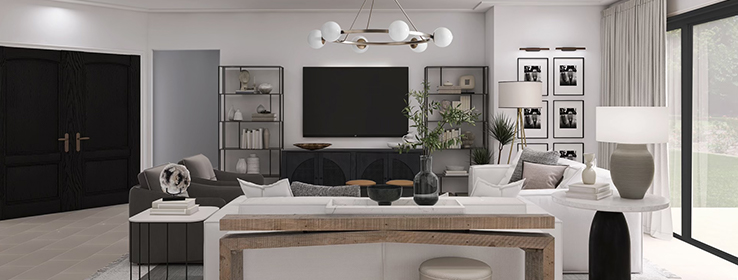The world is doing business digitally like never before, and designers and architects are by no means exempt. Despite the odds, a profession that benefits so greatly from being present in a space is somehow—miraculously and continuously—adapting to life in the digital and remote-work realm.
STIR reached out to our designer community to find out more about how the future of phygital design is impacting current projects and pursuits.
The Zoom Boom: Designing from (and for) Afar
Until recently, the concept of remote residential, commercial, and resimercial design has seemed logistically implausible. But the pandemic has forced designers to dive into the digital age like nothing else has, and current technologies have opened up a breadth of opportunities for professionals willing to make the leap.
For example, many design schools are now offering CEU courses that educate students about using Zoom, the now-ubiquitous video teleconferencing software, as a useful tool for communicating with clients when in-person meetings aren’t possible.
For many designers, it’s “do or die” to implement these new remote-design methods in this climate, since even nearby clients might find a video call more comfortable (and easier to fit into the day) when looking over plans and renderings.
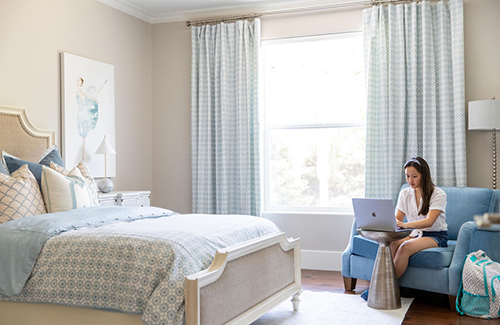
Kerrie Kelly recognizes the importance of put-together spaces for the new videoconferencing era.“Any coordinated, ‘everything in its place’ backdrop earns extra points and is hundreds of times better than having your coworkers peek into your unmade bedroom scene.”
Wall color: Agreeable Gray SW 7029 (243-C1). Photo by Lindsey King.
While designers must now consider ways to incorporate video calls into their own operations, their clients’ use of these new tools in their own spaces is just as important. How will a space look in person and as a backdrop for the client’s personal and professional calls?
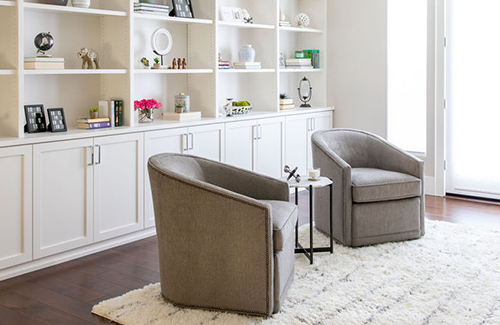
“For the future, it is our hope that technology advances to deliver solutions to visualize colors on-screen in a universally recognized method,” says Kerrie Kelly. “These may not be not limited to color specification, but they are important for any digital color communication activity.”
Color: Snowbound SW 7004 (256-C2). Photo by Lindsey King.
“Homeowners are discovering the art of a good vignette, from loads of light, to artwork, interesting wallcovering, to pops of color, a little greenery and objects of different sizes,” says Kerrie Kelly of Kerrie Kelly Design Lab. “Even if you are stuck in your bedroom for your virtual meetings, it is possible to channel your inner Marie Kondo to create a backdrop that is buzzworthy.”
Rendered Awestruck: Designing Digitally
Social distancing measures have removed many professionals from their workplaces, but for some designers, the workplaces themselves have gone fully digital as well. Brit Hutt is one of countless designers who have made digital renderings their bread-and-butter as the distinctions between the virtual world and the real one become ever more fluid.
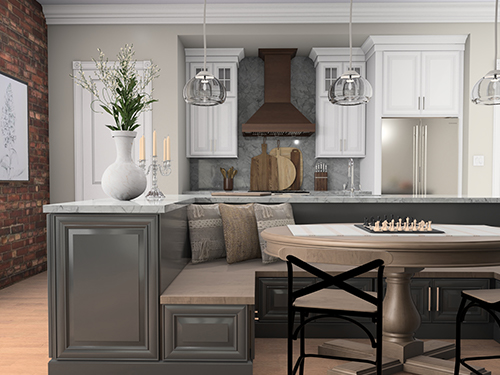
When it comes to accurately representing paint colors and sheens, digital designer Brit Hutt has a few tricks up her sleeve. “If I have a high-gloss cabinet finish, I select that in the software in order to have the renderings create reflections in the cabinets which adds an element of realism and gives the client the full effect of what that high-gloss finish will add to the space.”
Cabinet color: High Reflective White SW 7757 (256-C1) and Iron Ore SW 7069 (251-C7), wall color: Repose Gray SW 7015 (244-C1). Image courtesy of Brit Hutt.
“Being able to create realistic design representations of the client’s space allows me to show my clients what the space will look like and help those without the ability to fully envision what their space could become,” Hutt says. “I like to make my renderings as accurate as possible by matching windows, doors, trims, and any items that will remain the same in order to allow the client reference points of what is existing and what will be new, when needed.”
Hutt has fine-tuned her process to better represent designs to her clients in a digital rendering, but she says that technology has come so far, the obstacles she faces as a digital designer are becoming fewer and farther between. She relies on quality construction photography, careful communication, and her own expertise and experience to fill in the gaps.
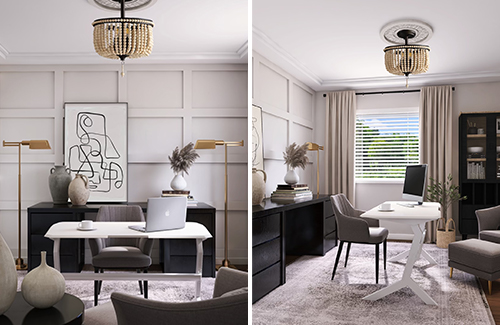
Habit Haus’s “Design is for Everyone” philosophy holds true through their fully digital suite of services. “[We] believe that a thoughtfully arranged space can evoke happiness, tranquility and motivation to help build good habits.”
Wall color: Windfresh White SW 7628 (259-C7). Image courtesy of Habit Haus.
Cynthia and Ceci Astorga, twin sisters and interior designers at Habit Haus Design Studio, make sure to communicate with their clients one particular shortfall of digital renderings: the difficulty of re-creating true natural light, especially when it comes to selecting paint colors. “The light in the room can significantly alter the shade or hue of a color selection,” the twins say. “For this reason, we send out 8x11 swatches of various similar shades to our clients to ensure the color reflects well against the natural light in the room.”
The Influence of Digital on Offline Design
This blurring of physical and digital spaces has ushered in an era where the prevalence of virtual reality is affecting our experiences—and expectations—of the physical world. Decor is showing signs of this influence, with more inventive materials, intriguing finishes (like oil slick and pearly iridescence), and bold pops of mood-boosting color mimicking the futuristic possibilities of virtual environments.
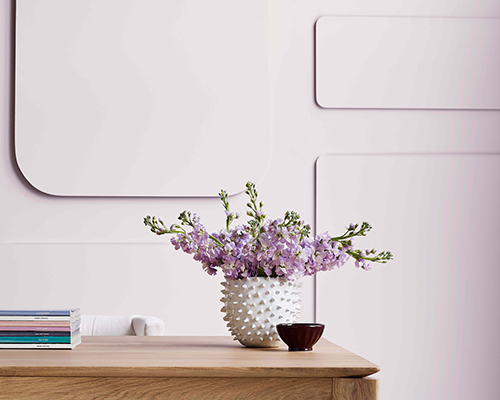
Lite Lavender SW 6554 (189-C1), featured in the Dreamland palette of the 2022 Colormix® Forecast, embodies the renewed optimism and exciting possibilities the digital future presents for design.
Industry trend watchers predict that emerging cross-reality applications will continue to give our in-real-life spaces an intriguing digital quality. Some color trends are also skewing more artificial than organic, while still maintaining a pulled-together sophistication that keeps traditional design principles in play.
We’re moving into a near future where physical and digital realms should be thought of as closely interchangeable, especially as commercial and residential design grows increasingly impacted by the magic of mixed reality (XR). We’ll all need to find new ways to engage with clients, customers, and other contacts—both in the real world and in a virtual world that’s becoming more “real” by the day.
Image at top courtesy of Habit Haus. Walls: Greek Villa SW 7551 (254-C1), door: Tricorn Black SW 6258 (251-C1).


